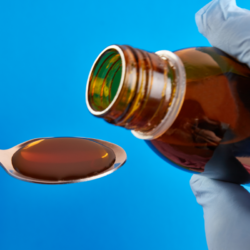Recently, an increase in the number of cases of scarlet fever, an infectious disease that mainly affects children, has been observed in France and other European countries. This is a worrying trend, and is raising concerns about its implications for public health. Known for its typical symptoms of sore throat, fever and a distinctive rash, scarlet fever, caused by group A streptococcus bacteria, was once a common and often mild childhood illness. However, the recent increase in the number of cases, particularly among the under-10s, highlights the need for increased surveillance.
This follows a period of declining incidence of scarlet fever, particularly during the COVID-19 pandemic, when social interaction was limited. However, with the resumption of normal activities and greater circulation of respiratory viruses, including seasonal influenza and respiratory syncytial virus, the risk of invasive group A streptococcal disease appears to be increasing.
What is scarlet fever?
Scarlet fever is a contagious, epidemic infectious disease affecting mainly children, resulting in the systematic spread of exotoxins that give rise to the rash characteristic of scarlet fever. The incubation period for scarlet fever is fairly short, between 1 and 5 days. The onset is sudden and combines high fever (up to 40), chills, vomiting, pharyngeal (throat) and abdominal pain. This is followed, after 2 months, by an exanthem and enanthem (in the mouth and throat), red and swollen tonsils, a sandy and then raspberry-red tongue, red angina, itchy skin, adenopathy and heart problems.
Scarlet fever mainly affects children aged between 5 and 10, usually during the winter. It is transmitted mainly by air (nasal droplets).
A little history
How is the disease diagnosed?
Scarlet fever is diagnosed primarily clinically, by a doctor during a medical consultation. He or she examines the patient’s throat and looks for signs of the characteristic rash, often accompanied by high fever, throat inflammation, loss of appetite and headache. To confirm the presence of the Streptococcus pyogenes bacteria that cause scarlet fever, a throat culture is taken. The sample is then analysed in the laboratory to identify the bacteria.
The rapid antigen test is another method for detecting the presence of Streptococcus pyogenes, providing results in just a few minutes. This test, also known as Trod angina, is recommended for children aged 3 and over. It involves a swab being taken from the tonsils, followed by a chemical reaction indicating the presence or absence of group A streptococcus.
It is important not to confuse scarlet fever with other conditions such as streptococcal toxic shock, staphylococcal infections, Kawasaki disease, or viral infections such as rubella. The characteristic chronology of enanthema helps the doctor to orientate his diagnosis. Complications from scarlet fever are rare, and appropriate treatment with antibiotics is generally effective.
What causes scarlet fever?
Scarlet fever is caused by a group A haemolytic streptococcus called : Streptococcus pyogenes, which spreads its toxins throughout the body. This creates a purulent focus in the pharynx and tonsils (a form of angina), and this is the start of the toxic infection. In the best cases, the disease progresses in 2 to 3 weeks, but it can be complicated by nephritis.
The agent responsible for scarlet fever is a bacterium called Streptococcus pyogenes, also known as group A beta-haemolytic streptococcus. In rare cases, group C or G streptococci may also be the cause.
The infection is transmitted by air, through contact with the oropharyngeal secretions of an infected person or a healthy carrier. Although the pharynx is the main route of entry, other areas such as the skin or female genital tra ct can also be affected.
Incubation of the disease is relatively rapid, lasting from 2 to 5 days. The streptococcus is located in the throat. The scarlet fever rash is caused by an erythrogenic toxin or pyrogenic exotoxin. Certain subtypes of streptococci secrete this toxin. There are several forms of this toxin: A, B, C and D. They are immunogenic and cause vasodilatation, dermal oedema and lymphocytic infiltration. Toxins B and C correspond to mild forms of scarlet fever. Toxin A is associated with more severe cases.
Following infection, specific immunity develops to the subtype of streptococcus involved. Recurrence is therefore possible if a person is exposed to another subtype of streptococcus.
Can scarlet fever be prevented?
There is no vaccine against scarlet fever. However, adopting simple hygiene measures is crucial to preventing contamination and the spread of the streptococcus responsible.
Preventive measures against transmission:
- Avoid contact with infected people.
- Wash your hands frequently, especially after coming into contact with a sick person or potentially contaminated objects.
- Regularly clean and disinfect objects used by patients, such as toys, cutlery, glasses and utensils.
- Clean and disinfect frequently touched surfaces (door handles, light switches, counters).
It’s also advisable to get vaccinated against diphtheria and tetanus, two diseases that can cause complications in scarlet fever sufferers.
Hand and nose hygiene:
- Wash your hands with liquid soap for 30 seconds, then rinse and dry them thoroughly.
- Teach your child to wash his hands and keep his fingernails short.
- Use single-use tissues to blow their nose.
- Teach your child to cover his mouth and nose with a handkerchief or his sleeve if he sneezes or coughs.
Limit contact in the event of scarlet fever:
- Avoid hugs and close contact.
- Keep sick children at home and inform their school.
- Avoid letting the sick child get too close to healthy people.
- Do not share your sick child’s personal belongings.
- Regularly clean objects used by the sick child.
Maintaining a healthy home:
- Avoid exposure to tobacco smoke.
- Ventilate your home daily.
- Maintain a room temperature of between 18 and 20°C.
Are there any medicinal plants to combat scarlet fever?
The antibiotic of choice for GAS infections is penicillin. To date, there is no evidence of resistance. For invasive infections, doctors recommend adding clindamycin. This choice is justified by clindamycin’s anti-toxin effect, its efficacy independent of the size of the inoculum and its post-antibiotic effect. However, to enhance the efficacy of antibiotic therapy, the use of certain medicinal plants remains essential.
Echinacea has a dose-dependent antibacterial preventive and curative action, inhibiting the growth of certain germs. Its antibacterial effect therefore acts directly on Streptococcus pyogenes. Echinacea is, however, contraindicated for children under the age of 12.
Echinacea stimulates the immune system’s defences against infection, thanks in particular to its lipophilic ethanol fraction (alkylamides) and its hydrophilic polysaccharide fraction. Phenolic derivatives such as cichoric acid play a key role. It increases splenocyte proliferation, boosts natural killer (NK) cells and modifies T lymphocytes and cytokine levels.
Echinacea has antiviral, antibacterial, antifungal and anti-inflammatory properties. It acts against various viruses, including coronaviruses, and has antifungal activity against Candia albicans. Its anti-inflammatory action is due to alkylamides and polysaccharides, modulating macrophage activation and inhibiting inducible nitric oxide synthase (iNOS). It is used to treat various skin conditions and respiratory infections.
The broad-spectrum antibacterial effect of tea tree oil is linked to the MT alcohols (active against antibiotic-resistant Staphylococcus aureus, Escherichia coli, Steptococcus pneumoniae and pyogenes, and Hemophilus influenza). However, tea tree essential oil is contraindicated for children under the age of 7.
Medical literature and clinical trials
- Birt DF, Widrlechner MP, Lalone CA, Wu L, Bae J, Solco AK, Kraus GA, Murphy PA, Wurtele ES, Leng Q, Hebert SC, Maury WJ, Price JP. Echinacea in infection
- Ultee A, Bennik M, Moezelaar R. The phenolic hydroxyl group of carvacrol is essential for action against the food-borne pathogen Bacillus cereus. Appl Environ Microbiol. 2002
- Ultee A, Kets W, Smid E. Mechanisms of action of carvacrol on the food-borne pathogen Bacillus cereus. Appl Environ Microbiol. 1999
- Carson CF, Mee BJ, Riley TV. Mechanism of action of Melaleuca alternifolia (tea tree) oil on Staphylococcus aureus determined by time-kill, lysis, leakage, and salt tolerance assays and electron microscopy. Antimicrob Agents Chemother. 2002
- Halcón L, Milkus K. Staphylococcus aureus and wounds: a review of tea tree oil as a promising antimicrobial. Am J Infect Control. 2004
- Nelson RR. In-vitro activities of five plant essential oils against methicillin-resistant Staphylococcus aureus and vancomycin-resistant Enterococcus faecium. J Antimicrob Chemother. 1997
- Ferrini AM, Mannoni V, Aureli P, Salvatore G, Piccirilli E, Ceddia T, Pontieri E, Sessa R, Oliva B. Melaleuca alternifolia essential oil possesses potent anti-staphylococcal activity extended to strains resistant to antibiotics. Int J Immunopathol Pharmacol. 2006
- Papadopoulos CJ, Carson CF, Hammer KA, Riley TV. Susceptibility of pseudomonas to Melaleuca alternifolia (tea tree) oil and components. J Antimicrob Chemother. 2006





